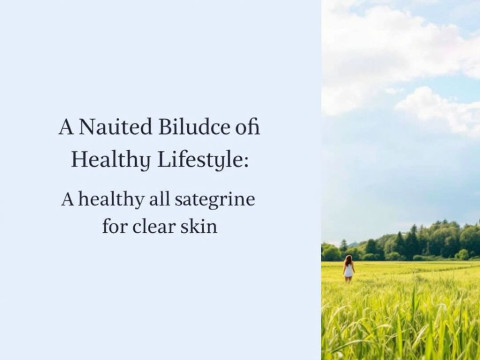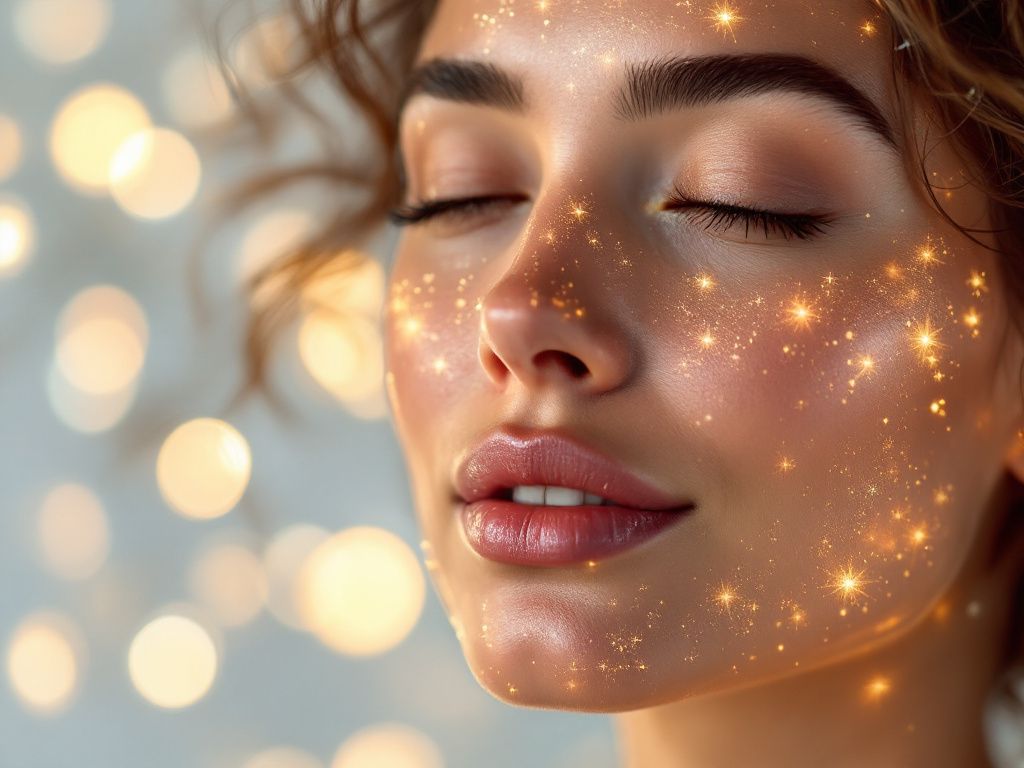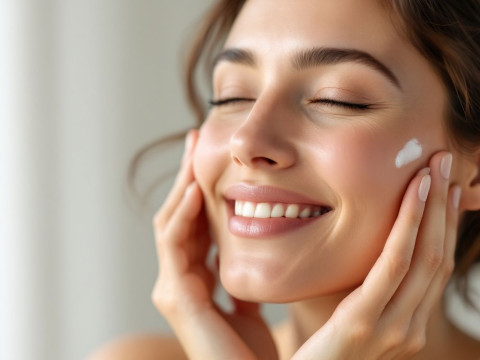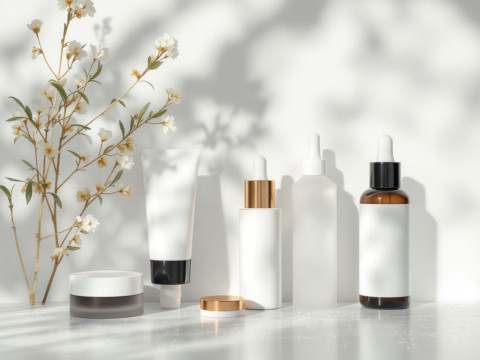As we slide into the thick of the festive season, there’s a million things on our plates—from buying gifts to planning gatherings. But let’s not forget one more task: getting your skin holiday-ready. Ever feel the stress of prepping for that big holiday party, only to discover your face has decided it’s the perfect time to stage a breakout? Oh, the irony! Winter acne creeps up on us, uninvited, just when we wish for that flawless, festive look. So, let’s unravel the mysteries of managing your skin during this time of the year, ensuring that pesky pimples don’t photobomb your holiday pics!
Understanding Winter Acne Woes
Winter acne is that mischievous guest that shows up without an RSVP. It thrives in cold weather and is often more stubborn than the summer kind. Why, you ask? The air gets drier, and so does your skin. When your skin dries out, your natural response is to produce more oil, leading to clogged pores and acne. Quite the opposite of what we’d want, right?
Moreover, let’s remember the holiday stress and frequent festive feasts that add to the mix. Sugar-laden treats and late-night parties, although irresistible, can also trigger breakouts. It’s crucial to strike a balance. Moderation is essential if we want to face the festive season with glowing, acne-free skin.
Steps to Flawless Holiday Party Skin
Now that we know why winter acne is a thing, let’s talk solutions. The goal is to arrive positively radiant at every party, with not a blemish in sight. And trust me, achieving this isn’t as daunting as it seems.
1. Hydrate, Hydrate, Hydrate!
Winter is unforgivingly drying. The remedy? Water, and lots of it. Hydrating from within is the first step. Keeping up with those eight glasses a day helps flush out toxins and combat dry skin—less dehydration, fewer breakouts. Alongside, consider using a humidifier at home. This adds moisture back to the air, ensuring your skin stays supple.

2. Choose a Skin-Friendly Cleanser
Make a switch to a gentle, hydrating cleanser. During winter, that aggressive, foaming formula from the summer months? Put it aside for now. Instead, reach for something creamier that won’t strip away necessary moisture. Look for cleansers with ingredients like glycerin or hyaluronic acid. They cleanse, yet keep your skin’s natural barrier intact.
3. Exfoliate Wisely
Don’t give it all out when it comes to exfoliation. Overdoing it can lead to irritation and worsen winter acne. Go for a chemical exfoliant (like a mild AHA or BHA) once or twice a week. This helps remove dead skin cells without harsh scrubbing, reducing the likelihood of future breakouts. It’s all about balance.
4. Moisturize Like You Mean It
The golden rule: never skimp on moisturizer. Even if you have oily skin, opting for a non-comedogenic, oil-free moisturizer is crucial. For others, thicker creams or ointments with ceramides can really lock in moisture. You want to provide a protective barrier against the cold.
5. Smart Makeup Choices
As we spruce up for those holiday parties, makeup becomes our ally—and sometimes, our foe. What’s key here? You guessed it—non-comedogenic products. Always prep your skin with a good primer to seal in moisture and create an even, protective layer between your skin and makeup. Long-lasting foundations are great, but don’t forget to clean them off completely before hitting the sack. Letting makeup sit overnight invites acne for breakfast.
6. Dietary Considerations
Those decadent chocolates? That extra gingerbread cookie? Delicious, without doubt. But rich, sugary treats can trigger inflammation, prompting acne flare-ups. Aim for a diet rich in antioxidants and omega-3 fatty acids—think greens, salmon, and nuts. Supplements can be your friend too; fish oil and zinc help keep skin calm and clear.

7. Catch Quality Sleep
This one’s simple in theory but challenging during the holiday rush: get enough sleep. Our bodies recuperate and repair themselves best while resting. Lack of shut-eye can boost cortisol levels, subsequently spiking oil production and, you got it, acne! Prioritize sleep where you can—it’s essential for showing up fresh-faced.
8. Stress Management
Easier said than done, but keeping stress at bay really does wonders. Try simple, effective methods like meditation, deep breathing, or even yoga. All these manage to keep those stress levels in check, protect your skin, and help you stay in a good mood—a win-win scenario.
Building a Routine for Long-Term Success
Now that we’ve nailed down our emergency holiday skin strategy, let’s think long-term and make these habits stick. Consistency is vital here. It doesn’t mean turning your life upside down; just weave these little tweaks into your daily routine. You’ll thank yourself in the months to follow when you manage to avoid pesky winter acne altogether.
Maintain a Balanced Routine
Think of your skin routine not just as a seasonal thing. Implementing the basic structure year-round primes your skin for whatever each season throws at it: hot, cold, or neither.
Morning Routine

- Cleanse with a gentle, hydrating cleanser.
- Protect with an SPF moisturizer (Yes, even in winter – UV rays don’t take a holiday!)
- Prep your face with a light primer if you’re wearing makeup.
Night Routine
- Remove all makeup thoroughly.
- Cleanse to freshen up the skin from pollutants.
- Nourish with hydrating serums containing hyaluronic acid or peptides.
- Moisturize according to your skin requirements (thicker creams for dry skin, lightweight for oily).
Mistakes to Avoid
We can’t forecast every little hormonal breakout, but avoiding common slip-ups reduces their likelihood:
- Don’t Touch: Resist the urge to pick. Unnecessary touching can spread bacteria and exacerbate acne.
- Avoid Heavy Oils: Not all oils are bad, but some can clog pores. Be selective—jojoba and rosehip are safer bets.
- Over-Exfoliation: We already talked about this, but really, gentle is key here.
Enjoy the Festivities
As you refine your care routine, remember to enjoy the holiday chaos. It’s about balance. Following these steps ensures your skin won’t let you down, even in the chilliest of winters or the most swamped of festive seasons.
Give these a try. Really, winter acne doesn’t stand a chance if you prep and care for your skin the way it deserves. If there’s a takeaway here, it’s that happy, healthy skin has more to do with a few measured steps away from last-minute panic and towards regular, thoughtful care.
Start now, and watch as healthy, glowing skin takes center stage wherever your holiday season celebrations lead you! Go on, dazzle them with your radiance—and may your holiday gatherings be merry and bright, not just because of the twinkling lights but also due to the sparkle of your skin!
Frequently Asked Questions
What is winter acne?
Winter acne refers to the acne breakouts that occur or worsen during the winter months. This is primarily due to the dry, cold weather, which causes the skin to produce more sebum, leading to clogged pores and breakouts[1][3][5).
Why does winter acne occur?
Winter acne occurs because the dry air, both outdoors and from indoor heating systems, strips the skin of its necessary moisture. In response, the body produces more sebum, which can cause skin cells to stick together, clog pores, and lead to breakouts. Additionally, cold and windy conditions can cause inflammation and make the skin more vulnerable to bacteria[1][3][5).
How can I prevent winter acne?
To prevent winter acne, it is important to maintain skin hydration. Use lukewarm water for showers, limit hot showers to under five minutes, and use gentle cleansers. Moisturize after showering or bathing, especially targeting acne-prone areas with non-comedogenic products. Regular exfoliation with products containing retinol, retinoid, or salicylic acid can also help, but ensure to moisturize afterward[1][3][5).
What parts of the body are most affected by winter acne?
Winter acne is most commonly seen on the face, particularly in the T-zone (forehead, nose, and chin), where oil production is highest. It can also occur on other parts of the body such as the shoulders, back, and upper chest[3][5).
References- Zwerner, J. (n.d.). Prevent winter acne with these 3 expert tips. Teladoc Health.
- Nagler, A. (2018). Here’s Why You Get More Acne in the Winter — And How to Fix It. TIME.
- Westlake Dermatology. (2022). Dermatologist Tips: Preventing and Treating Winter Acne. Westlake Dermatology.











